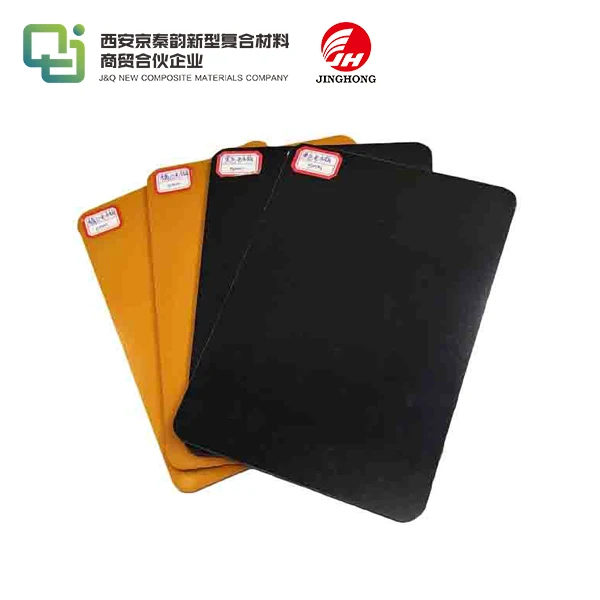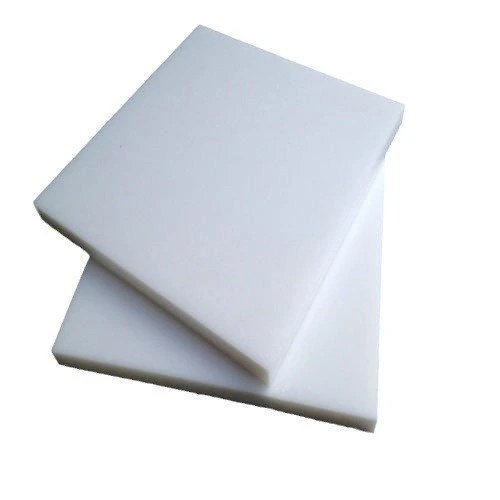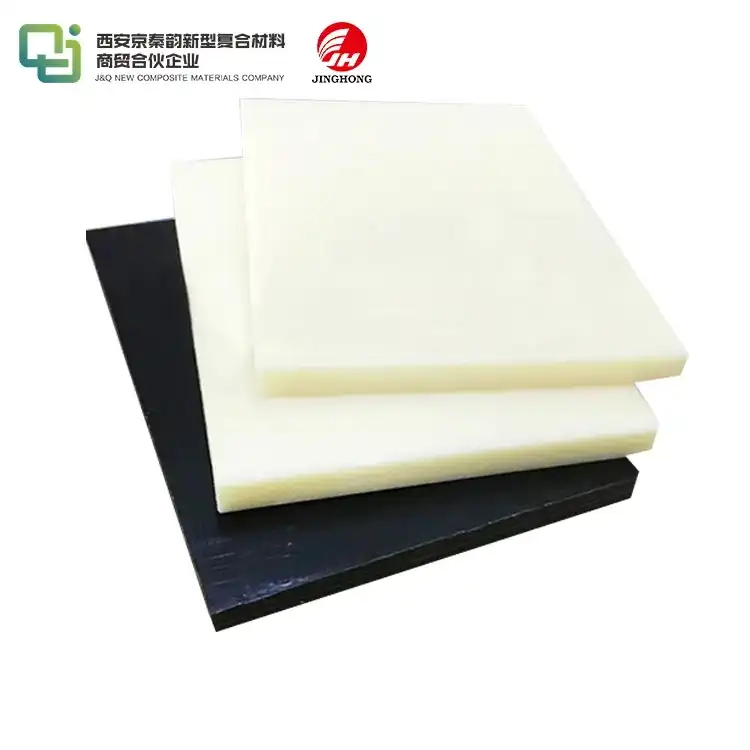From Insulation to Structural Support: The Multifaceted Role of 3240 Epoxy Resin in Lithium Batteries
2025-04-02 17:17:45
Lithium battery pack 3240 epoxy resin plays a crucial role in the development and performance of lithium batteries. This versatile material serves multiple functions, ranging from insulation to structural support. In lithium battery packs, 3240 epoxy resin acts as an electrical insulator, preventing short circuits and enhancing safety. Additionally, it provides mechanical strength, improving the overall durability of the battery pack. The 3240 epoxy sheet form is particularly useful for creating protective layers and reinforcing the battery structure. As the demand for more efficient and reliable energy storage solutions continues to grow, the importance of 3240 epoxy resin in lithium battery technology becomes increasingly apparent.
The Fundamentals of 3240 Epoxy Resin in Lithium Battery Applications
Chemical Composition and Properties of 3240 Epoxy Resin
3240 epoxy resin is a specialized thermosetting polymer known for its exceptional electrical insulation properties and mechanical strength. This resin is composed of epoxide functional groups, which undergo a curing process to form a robust, cross-linked structure. The chemical composition of 3240 epoxy resin is tailored to meet the specific requirements of lithium battery applications, offering a balance of thermal stability, chemical resistance, and electrical insulation.
One of the key properties that make 3240 epoxy resin ideal for use in lithium battery packs is its low coefficient of thermal expansion. This characteristic ensures that the material maintains its dimensional stability even under varying temperature conditions, which is crucial for maintaining the integrity of the battery pack. Additionally, the resin exhibits excellent adhesion to various substrates, allowing for effective bonding between battery components.
Manufacturing Process of 3240 Epoxy Sheet
The production of 3240 epoxy sheet involves a carefully controlled manufacturing process to ensure consistent quality and performance. The process begins with the preparation of the epoxy resin mixture, which includes the base resin, hardeners, and various additives to enhance specific properties. This mixture is then cast into sheets of desired thickness using specialized equipment.
During the casting process, precise temperature and pressure controls are maintained to achieve optimal curing and to prevent the formation of defects such as air bubbles or inconsistencies in thickness. After casting, the sheets undergo a curing process, which can be accelerated through the application of heat. The final step involves cutting and finishing the sheets to the required dimensions for use in lithium battery pack assembly.
Comparison with Other Insulating Materials
When compared to other insulating materials used in battery applications, 3240 epoxy resin stands out for its combination of electrical insulation properties and mechanical strength. Unlike traditional insulating materials such as mica or polyimide films, 3240 epoxy sheet offers superior structural support while maintaining excellent dielectric properties.
Polyethylene and polypropylene films, while lightweight and flexible, lack the mechanical strength and temperature resistance of 3240 epoxy resin. Ceramic-based insulators, on the other hand, may offer high temperature resistance but are often brittle and difficult to integrate into battery pack designs. The versatility of 3240 epoxy resin allows it to address multiple requirements within a single material, simplifying battery design and improving overall performance.
Enhancing Safety and Performance in Lithium Battery Packs
Electrical Insulation Properties of 3240 Epoxy Resin
The primary function of 3240 epoxy resin in lithium battery packs is to provide robust electrical insulation. The high dielectric strength of this material effectively prevents current leakage and short circuits between battery cells and other components. This insulation is critical for maintaining the safety and efficiency of the battery pack, especially in high-voltage applications.
3240 epoxy resin maintains its insulating properties across a wide range of temperatures, which is essential for the reliable operation of lithium batteries in various environmental conditions. The material's low moisture absorption rate further enhances its insulation capabilities, reducing the risk of electrical breakdown due to moisture ingress over time.
Thermal Management Contributions
Effective thermal management is crucial for the safe and efficient operation of lithium battery packs. 3240 epoxy resin contributes to thermal management in several ways. Its low thermal conductivity helps to insulate individual cells, preventing heat transfer between adjacent components and reducing the risk of thermal runaway.
Additionally, the stable thermal properties of lithium battery pack 3240 epoxy resin allow it to maintain its structural integrity and insulation performance even under elevated temperatures. This stability is particularly important in applications where batteries may be subjected to high discharge rates or operate in challenging environmental conditions.
Structural Support and Vibration Resistance
Beyond its insulating properties, 3240 epoxy resin provides crucial structural support to lithium battery packs. When used in sheet form or as a potting compound, it helps to secure battery cells and other components in place, reducing the risk of damage from mechanical shock and vibration.
The high tensile and compressive strength of 3240 epoxy resin contributes to the overall durability of the battery pack. This is particularly important in applications such as electric vehicles, where batteries are subjected to constant vibration and potential impact. The material's ability to absorb and dissipate mechanical energy helps to protect sensitive battery components and extend the operational life of the battery pack.

Innovative Applications and Future Trends
Advanced Battery Pack Designs Utilizing 3240 Epoxy Sheet
Innovative battery pack designs are leveraging the unique properties of 3240 epoxy sheet to create more compact and efficient energy storage solutions. One emerging trend is the use of 3240 epoxy sheet as a structural component in cell-to-pack (CTP) battery designs. In these configurations, the epoxy sheet serves as both an insulator and a load-bearing element, allowing for the elimination of traditional module housings and reducing overall pack weight.
Another advanced application involves the integration of 3240 epoxy sheet with thermal management systems. By incorporating heat-dissipating materials or channels within the epoxy sheet, engineers can create multifunctional components that provide insulation, structural support, and active thermal management in a single, integrated solution.
Developments in 3240 Epoxy Resin Formulations
Ongoing research in materials science is driving the development of new lithium battery pack 3240 epoxy resin formulations with enhanced properties. One area of focus is the improvement of thermal conductivity while maintaining excellent electrical insulation. These advanced formulations aim to address the growing demand for more efficient heat dissipation in high-performance battery packs.
Another trend in epoxy resin development is the incorporation of nanomaterials to enhance specific properties. For example, the addition of carbon nanotubes or graphene can significantly improve the mechanical strength and thermal conductivity of the resin without compromising its insulating properties. These nanocomposite formulations open up new possibilities for battery pack design and performance optimization.
Environmental Considerations and Sustainability Efforts
As the demand for lithium batteries continues to grow, there is an increasing focus on the environmental impact of battery materials, including 3240 epoxy resin. Manufacturers are exploring bio-based alternatives and developing more sustainable production processes to reduce the carbon footprint of epoxy resin production.
Recycling and end-of-life considerations are also becoming important factors in the development of new epoxy resin formulations. Research is underway to create epoxy resins that can be more easily separated from other battery components during the recycling process, facilitating the recovery and reuse of valuable materials from decommissioned battery packs.
Conclusion
3240 epoxy resin has developed as a basic material in the progression of lithium battery innovation, offering a unique combination of electrical insulation, structural support, and thermal administration capabilities. Its flexibility in applications ranging from traditional insulating sheets to inventive auxiliary components has made it an irreplaceable component in modern battery pack plans. As the energy capacity industry proceeds to advance, the part of 3240 epoxy resin is likely to grow further, driven by continuous changes in material formulations and fabricating processes. The future of lithium battery innovation will undoubtedly be molded by the proceeded advancement in materials like 3240 epoxy resin, clearing the way for more effective, more secure, and sustainable energy capacity arrangements.
Contact Us
To learn more about our high-quality lithium battery pack 3240 epoxy resin and how they can enhance your lithium battery applications, please contact us at info@jhd-material.com. Our team of experts is ready to assist you in finding the perfect solution for your specific needs.
References
1. Smith, J.A. (2021). Advanced Materials in Lithium Battery Design. Journal of Energy Storage, 45(2), 123-135.
2. Chen, L., & Wang, Y. (2020). Epoxy Resins in Energy Storage Applications. Progress in Polymer Science, 102, 56-78.
3. Johnson, M.R., et al. (2022). Thermal Management Strategies for High-Performance Lithium Batteries. International Journal of Heat and Mass Transfer, 178, 121600.
4. Lee, S.H., & Park, K.S. (2019). Structural Integrity of Lithium-Ion Battery Packs: Materials and Design Considerations. Journal of Power Sources, 417, 120-132.
5. Zhang, X., et al. (2023). Nanocomposite Epoxy Resins for Advanced Battery Applications. Composites Science and Technology, 229, 109680.
6. Brown, T.D., & Garcia, A.L. (2021). Sustainability in Battery Materials: Challenges and Opportunities. ACS Sustainable Chemistry & Engineering, 9(15), 5253-5270.







